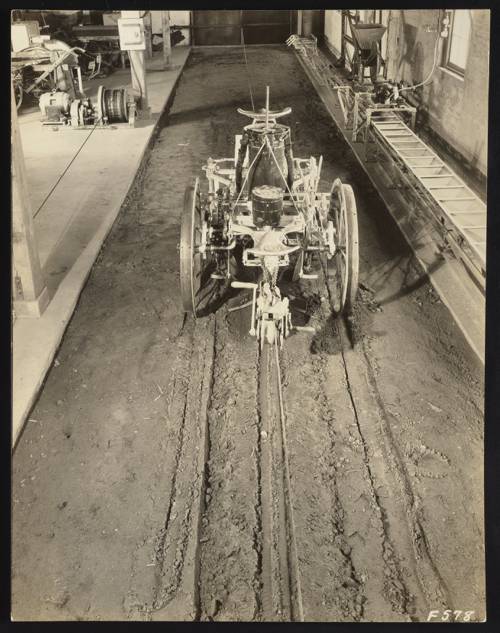
FAQ About Indoor Plant Soil Pasteurization Benefits and Methods

What is soil pasteurization?
Soil pasteurization is a process of treating soil to eliminate harmful pathogens, weed seeds, and other unwanted pests while preserving beneficial organisms. Unlike sterilization, which kills all living organisms in the soil, pasteurization aims to reduce the number of harmful microorganisms to levels that are not detrimental to plant growth.

Why is pasteurizing soil beneficial for indoor plants?
Pasteurizing soil for indoor plants helps to create a healthier growing environment by eliminating harmful pathogens and pests that can inhibit plant growth. It can also prevent damping-off, a common disease affecting seedlings and young plants, and reduces the need for chemical pesticides and herbicides.

How does pasteurization differ from sterilization?
Pasteurization and sterilization both aim to kill pathogens, but pasteurization is less extreme. Pasteurization heats soil to a temperature that kills harmful organisms but leaves beneficial microbes intact. Sterilization, on the other hand, involves more extreme heat or chemicals that kill all microorganisms, potentially harming soil health by removing beneficial microbes.

What are the common methods of soil pasteurization?
Common methods of soil pasteurization include using an oven, steam, or a microwave. The oven method involves heating soil at around 180°F (82°C) for 30 minutes. Steam pasteurization exposes soil to steam until it reaches the same temperature. The microwave method involves heating soil in a microwave-safe container for short intervals until it reaches the desired temperature.

Is soil pasteurization a chemical-free process?
Yes, soil pasteurization is a chemical-free process. It relies on heat to eliminate pathogens and pests, making it an environmentally friendly option compared to chemical soil treatments. This method supports organic gardening practices and is safe for indoor plants.

Can soil pasteurization affect beneficial organisms in the soil?
While soil pasteurization targets harmful pathogens, the process may also impact some beneficial organisms. However, the temperatures used are typically controlled to minimize this effect, preserving as many beneficial microbes as possible compared to complete sterilization.

What temperature is needed for effective soil pasteurization?
The recommended temperature for effective soil pasteurization is around 180°F (82°C). This temperature is sufficient to kill most harmful pathogens and weed seeds while preserving beneficial soil organisms that contribute to plant health.

Can pasteurized soil be reused for multiple planting cycles?
Yes, pasteurized soil can typically be reused for multiple planting cycles. By reducing pathogens initially, pasteurization helps maintain soil conditions favorable for repeated use, although it's advisable to monitor and treat the soil again if diseases begin to appear or the soil shows signs of degradation.

How long does soil need to be pasteurized to ensure effectiveness?
To ensure effectiveness, soil should be pasteurized for about 30 minutes at a temperature of 180°F (82°C). If using steam, the soil should be exposed until it reaches the same internal temperature for the same duration.

What are some signs that my indoor plants might benefit from pasteurized soil?
If indoor plants are suffering from diseases like root rot or fungal infections, seem stunted despite good care, or if you see insects in the soil, these might be signs that pasteurizing the soil could benefit them. It can help eliminate hidden soil pathogens and improve growth conditions.

Are there any safety precautions to take during soil pasteurization?
During soil pasteurization, especially when using ovens or microwaves, ensure that containers are heat-resistant and that lids are loose to allow steam to escape. Avoid overheating to prevent burning the soil, as burnt soil can release unpleasant odors and potentially harmful gases.

Is it possible to over-pasteurize soil?
Yes, it is possible to over-pasteurize soil if it is heated above the recommended temperature of 180°F (82°C) for too long. This can lead to sterilization, harming beneficial microbes and potentially damaging soil structure, making it less hospitable for plants.

Can pasteurization be applied to all types of soil?
Pasteurization can be applied to most potting soils commonly used for indoor plants. However, care should be taken when applying it to specialized soils, such as those with added organic matter or specific nutrient profiles, as excessive heat can alter their composition.

How often should I pasteurize soil for indoor plants?
How often to pasteurize soil depends on plant sensitivity and previous issues with diseases or pests. Generally, pasteurization is recommended when reusing soil for new plantings or if plants show signs of disease. Regular pasteurization isn't usually necessary if no problems are observed.

What equipment is needed for soil pasteurization at home?
For home soil pasteurization, you will need a heat source like an oven, microwave, or steamer. Oven-safe containers or microwave-safe dishes covered loosely are ideal. A thermometer can also be useful to ensure soil reaches and maintains the correct temperature.

Does pasteurizing soil improve plant growth?
Pasteurizing soil can indirectly improve plant growth by eliminating competition from pathogenic organisms and pests. This creates a healthier growing environment, which allows plants to access nutrients and establish more effectively without the stress of disease pressure.

Can pasteurization remove all types of pests from soil?
While pasteurization can effectively kill many soil-borne pests, such as nematodes and insect larvae, it might not remove pests that escape the soil during heating or are resistant to the heat, such as some mature insects. It's best when combined with other integrated pest management practices if necessary.

What are the limitations of soil pasteurization?
The limitations of soil pasteurization include potential impacts on beneficial microorganisms and the need for careful temperature control to prevent soil degradation. It can't remove all pests and pathogens, particularly those that leave the soil during heating, and requires time and energy to perform properly.

Is there an eco-friendly advantage to pasteurizing soil?
Yes, soil pasteurization is considered eco-friendly as it reduces the need for chemical pesticides and fertilizers. By killing harmful pathogens through heat, it supports organic gardening practices and reduces environmental impact while promoting healthy plant growth.

Can I pasteurize soil with simple kitchen tools?
Yes, simple kitchen tools like an oven or microwave can be used to pasteurize soil. Ensure the use of heat-safe containers, control temperature settings to maintain around 180°F (82°C), and vent the containers properly. This makes it an accessible method for most home gardeners.
